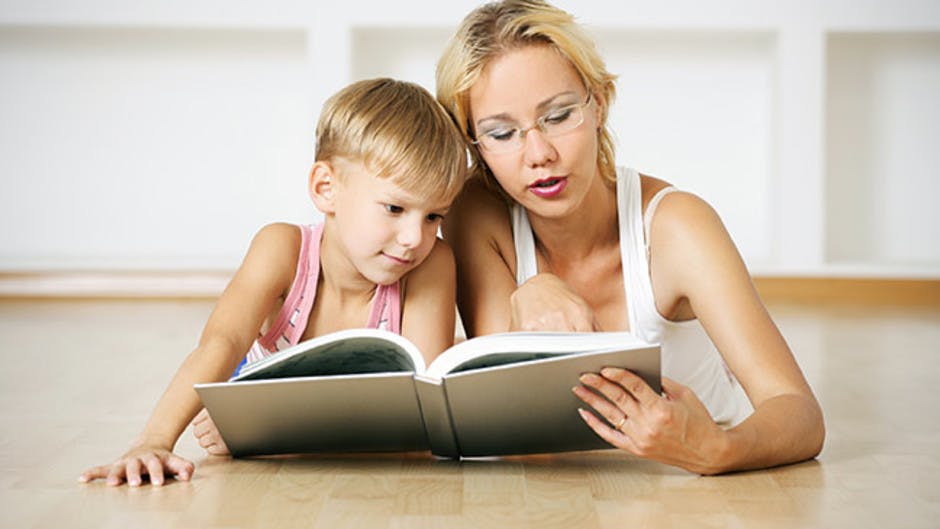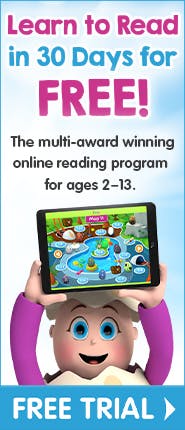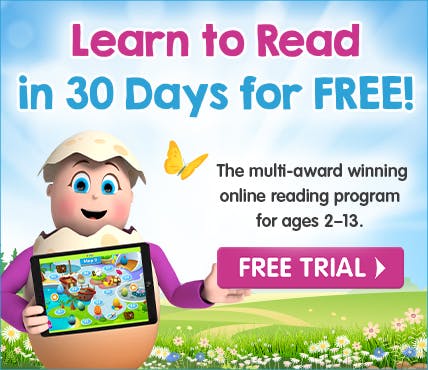


Helping Your Homeschooler Learn to Read - Part 1 of 2

Many homeschoolers wonder what the best age is for children to start learning to read.
The truth is that like all major developmental milestones, children learn to read at their own pace, and there’s no reason to push them into reading any earlier than they’re ready.
Learning to read involves several different stages. Most people consider children to be ‘reading’ when they are able to decode (or sound out) new words independently. For many children, this stage usually begins in kindergarten, after they have learned the names of the symbols (letters) and how they connect to the 40+ sounds of the English language.
To help children reach this stage, homeschoolers can implement regular pre-reading activities from an early age to prepare their child for future success in learning to read.
In our first part of ‘Helping Your Homeschooler Learn to Read’, we look at some ways to help your homeschooler take their first steps in learning to read:
Read to your child daily
Reading to your child regularly is just about the most important thing you can do to help them learn to read. Read slowly and choose books that introduce new vocabulary. Run your finger under the words when you read so that your child can connect what they hear with what they see on the page. Let them turn the page and repeat words after you while pointing at them. All of these techniques can be implemented daily.
Understand the learning to read process
It’s important for homeschoolers to be aware of the five essential components of reading. These are what children need in order to be able to read. They include:
phonemic awareness (the ability to hear and manipulate different sounds in words);
phonics (recognising the connection between letters and the sounds they make);
vocabulary (understanding the meaning of words, their definitions and their context);
reading comprehension (understanding the meaning of text); and
fluency (the ability to read aloud with speed, understanding and accuracy). Having an understanding of the learn-to-read process will enable you to focus on developing the exact skills your homeschooler requires to become a confident and fluent reader.
Point out words around you
Draw your child’s attention to words and letters you encounter out in the real world (e.g. on stop signs, billboards and product labels) and slowly sound them out. Ask your child to repeat the word or sound after you. Similarly, surrounding your child with functional print at home (e.g. magazines, menus, shopping lists, coupons) will help them understand the importance of words, and pretty soon they will be recognising familiar letters and even some common words.
Read by example
Children will feel more inspired to learn to read when they see the grownups around them reading, and enjoying it. If they show curiosity and ask questions about the book you’re reading, tell them about the story, the interesting characters you’ve met, and the new pieces of knowledge you’ve picked up. This will help them see value in learning to read.
Keep the joy of reading alive
Let your child choose their own books from time to time, even if you believe they’re too easy for them. Don’t overcorrect their mistakes, and let them reread their favourites as many times as they’d like. Inspiring your child to actually enjoy reading is the single most important way to help them develop into a confident reader who read for both pleasure and meaning. Learning to read shouldn’t have to feel like work. Make it fun, motivating and rewarding for your child and soon you will notice how easily they can make progress.
Click here for Part 2 of Helping Your Homeschooler Learn to Read
FREE trial - Make learning to read easy and fun for your homeschooler
Reading Eggs makes learning to read fun with hundreds of online reading games, activities and books for ages 2 to 13. Start your free trial now!


